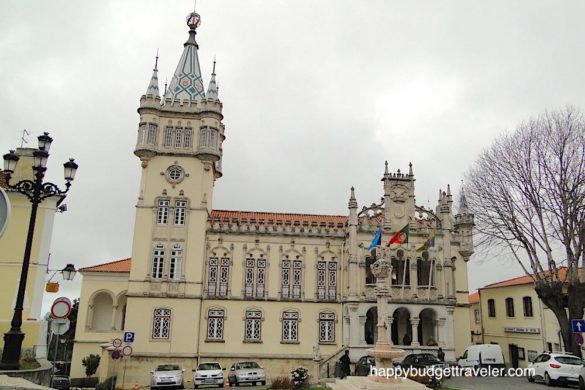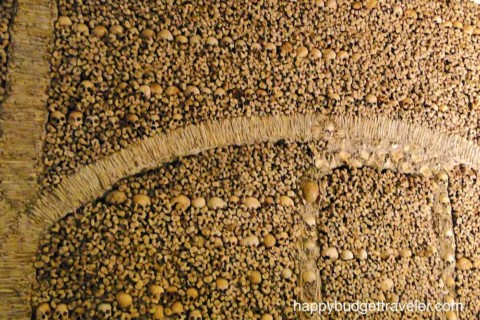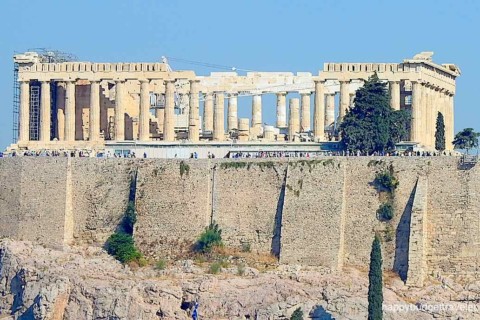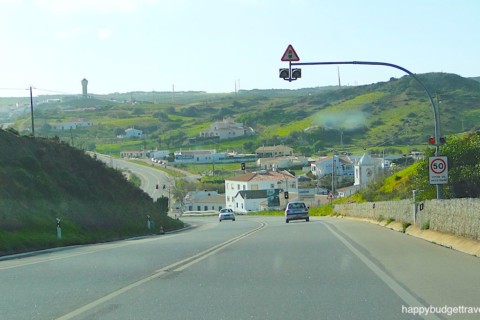Places to visit in the Algarve region of Portugal should definitely include Sagres for an unforgettable, romantic sunset. The Algarve region of southern Portugal is made up of several cities, towns, and villages. The region’s capital is the city of Faro where the international airport is located. Some of the other cities are Lagos, Sagres, Portimao.
Places To Visit In The Algarve
1. Lagos
Praia da Batata is a cozy beach just 5 minutes from the city centre. Overshadowed by a 17th-century fort, cliffs and pier, it is popular for swimming, kayaking and paddle-boarding. Due to its location, it offers access to numerous bars, restaurants and shops.
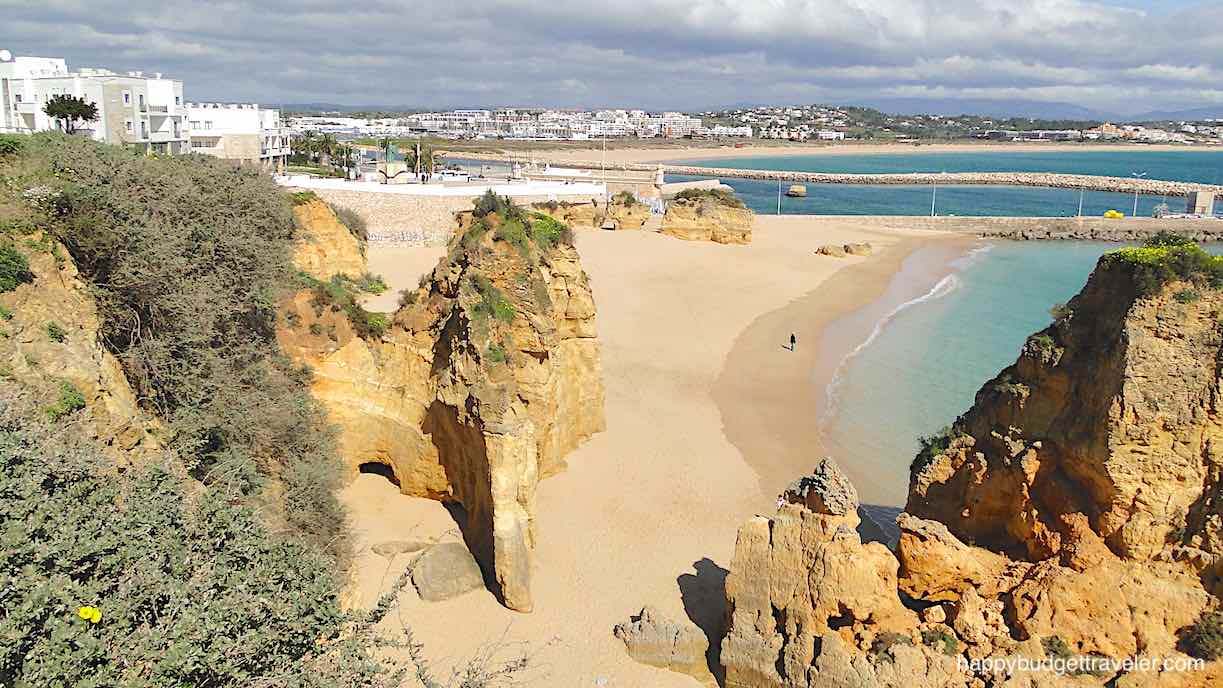
Batata beach, Lagos, Algarve region-Portugal
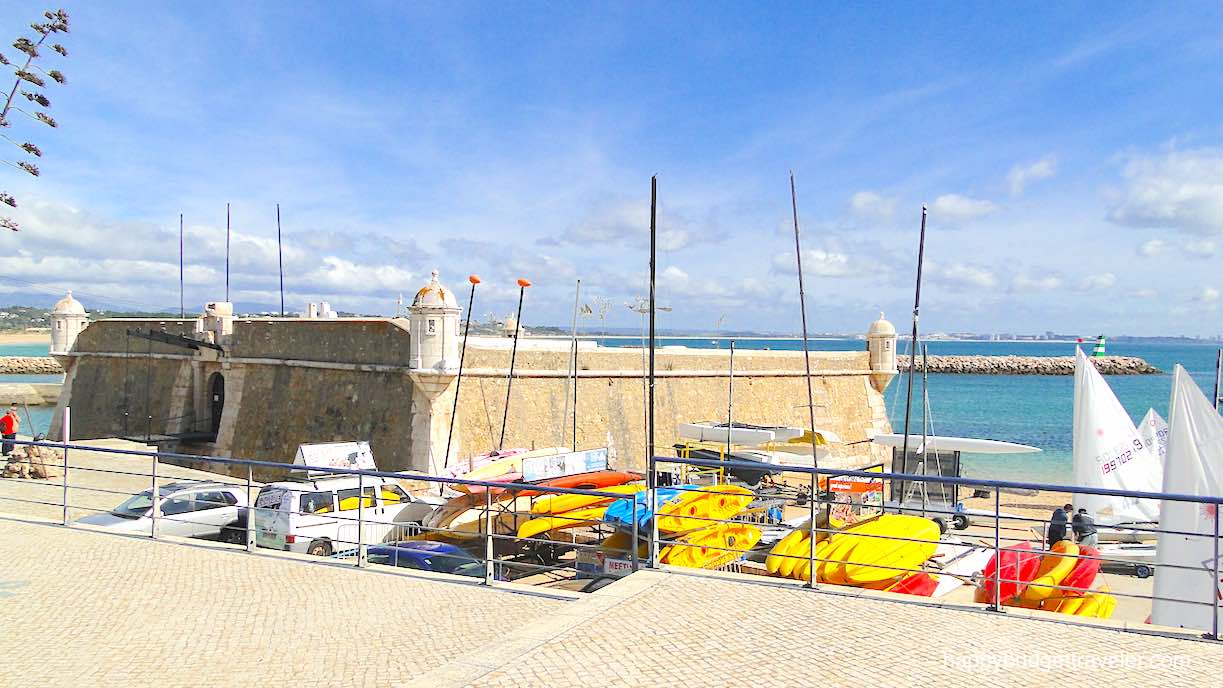
Bandeira Fort and Sailing club at Batata Beach, Lagos, Algarve region-Portugal
The southern end of Batata beach is bounded by steep cliffs which hide two other beaches. These beaches are always significantly quieter than the Praia da Batata. One of them, Student beach, is a small cove accessible through a rock tunnel or steep staircase. It is quite private with scenic cliffs and a modest sandy area for seating.
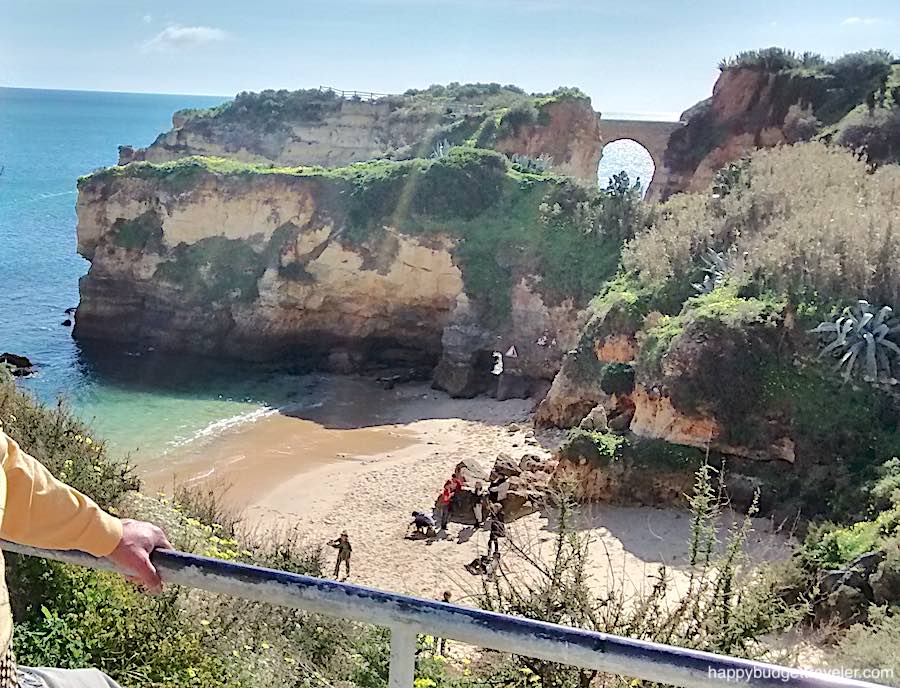
Student beach in Lagos, Algarve region-Portugal
The medieval seaside Castle of Lagos, now the residence of the governors of the Algarve is across from Potato beach.
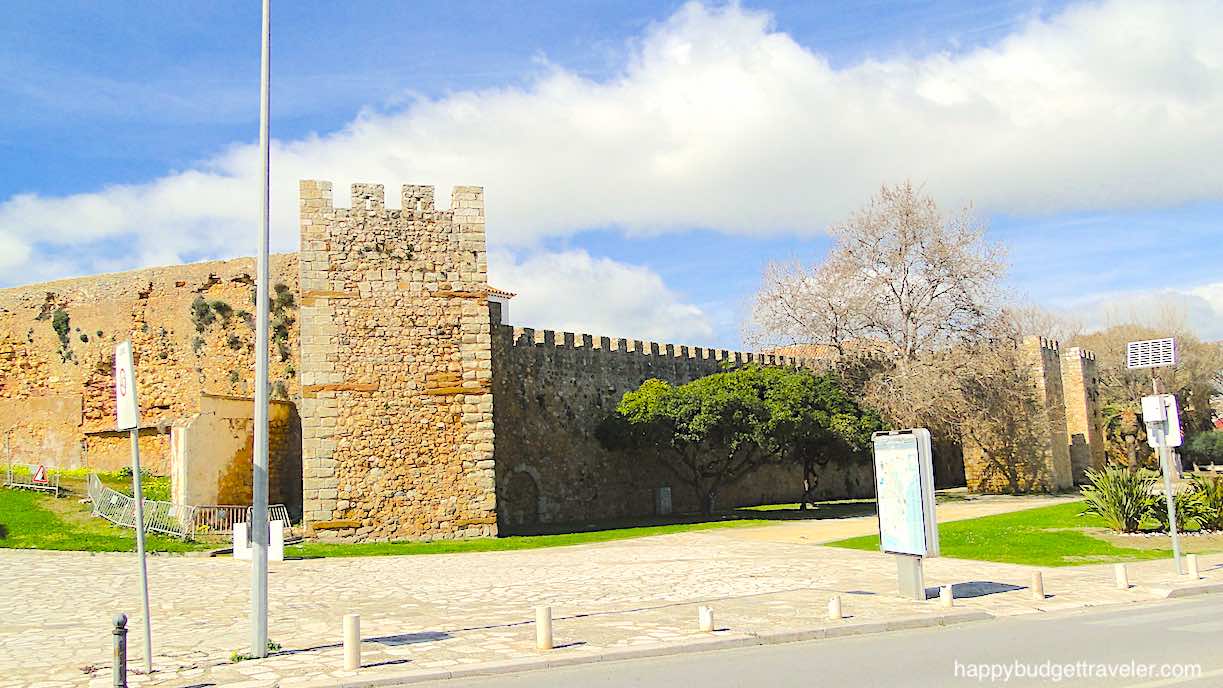
Medieval seaside castle, Lagos, Algarve region-Portugal
Besides the castle is the Church of Saint Maria. A block behind, nestled among the homes you will find the historic Church of Saint Anthony. Designed in distinct Baroque architecture, it is believed to be the birth site of Saint Anthony of Lisbon.
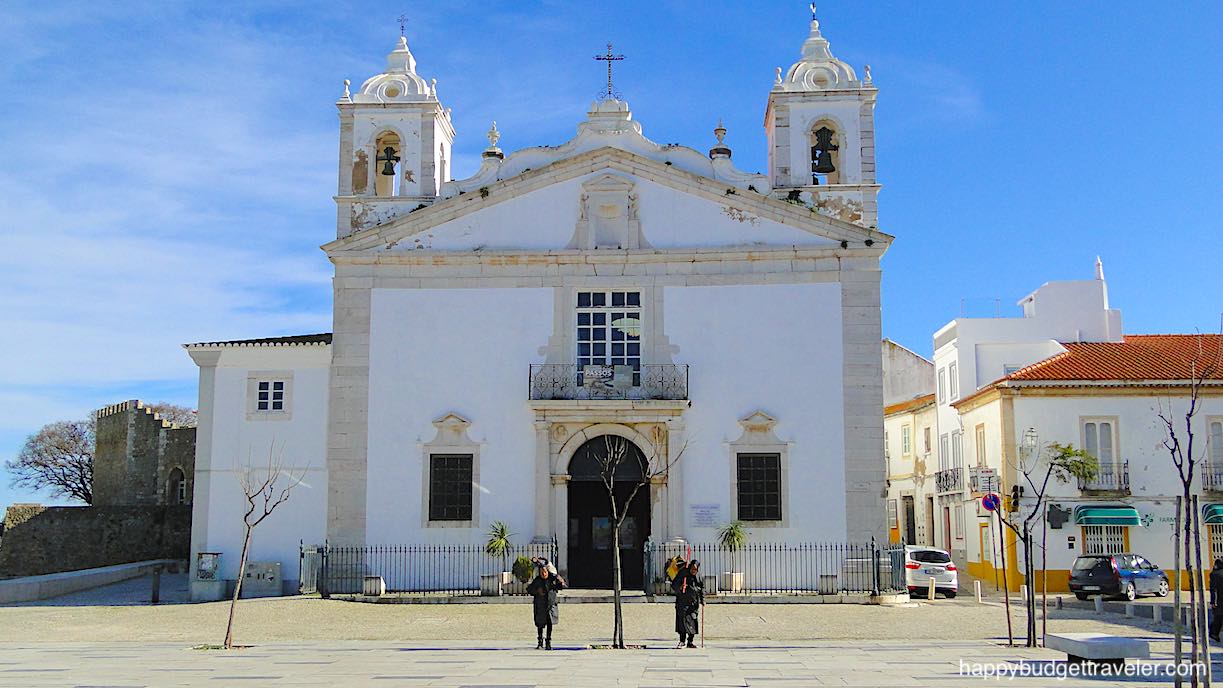
Church of Saint Maria, Lagos, Algarve region-Portugal
Near the church of Saint Maria you will find the Mercado de Escravos (Slave Market). Slaves brought back from the African continent in 1444 were sold here. It is held to be the site of Europe’s first slave market. The ground floor of the building now houses an art gallery.
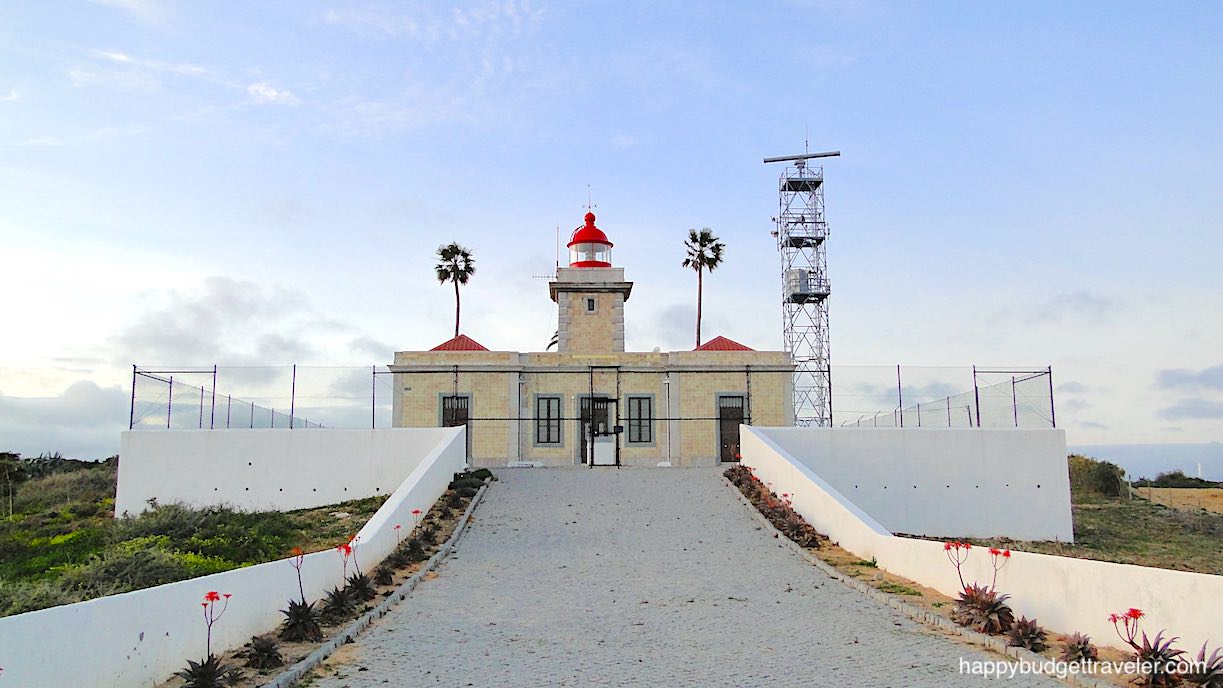
Farol (lighthouse) da Ponta da Piedade, Lagos, Algarve region-Portugal
Ponta da Piedade (Mercy Point) is 3 kms south of Lagos and considered to have the finest natural features. On the way here, you pass the Dona Ana and Camilo beaches. You end up up at the lighthouse, where there is a large car park. Praia do Camilo with its large sandy beach is a popular swimming and picnic destination.

Camilo beach, Lagos, Algarve region-Portugal
At Ponta da Piedade, the sandstone cliffs of the headland are carved into stunning rock pillars, tunnels and hidden grottos. Reaching the base of the cliffs requires a climb down (and up) a flight of 182 steps. The less agile should consider a boat-tour directly from Lagos.

Ponta da Piedade, Lagos, Algarve region-Portugal
It is a much better experience to view the headland from the water. This way you can navigate through the maze of unique rock formations, arches and sea caves. For this, I recommend a “small-boat” tour.

Ponta da Piedade, Lagos, Algarve region-Portugal
You could kayak or paddle-board here from Batata beach (2.5 hr tours). Snorkelling in the clear turquoise sea water is available depending on the weather. For visitors who walk or drive to the cliffs there are small boat tours that depart from the base of the cliffs as well and provide shorter length tours.
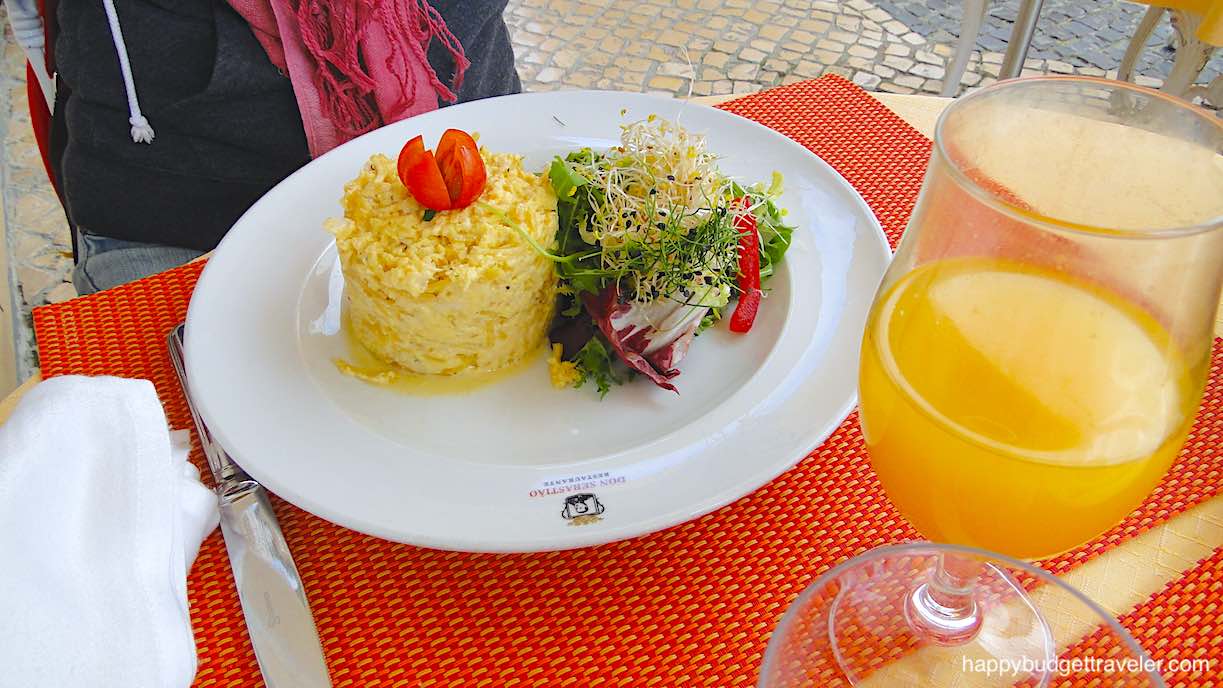
Bacalhau à brás at a local restaurant in Lagos, Algarve region-Portugal
In Lagos, food is a gastronomical experience, My favorites are “Bacalhau à brás” and a local restaurant dish called “Chicken in the Pottery Pot”.

Chicken in the Pottery Pot, Lagos, Algarve region-Portugal
2. Sagres
20 miles/32 kms west of Lagos is the town of Sagres. Known for its towering 40-75 metre high cliffs, dramatic scenery and fantastic beaches, it is also a surfers paradise. Sagres Fort is a 1 km walk from the town/bus stop. This unique fort comprises of just one single wall, with the other three sides protected by sheer cliffs.
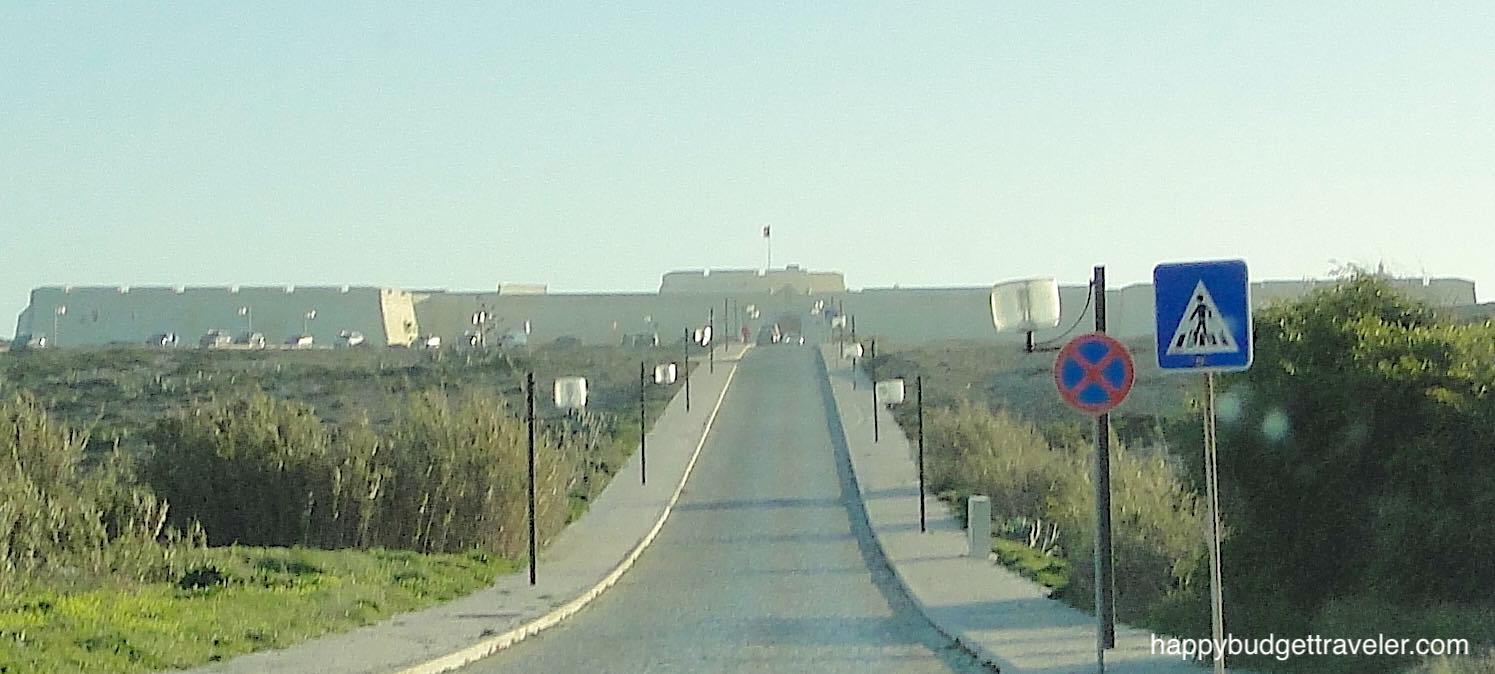
Fortaleza de Sagres, Algarve region-Portugal
The fort is vast but comparatively sparse with a chapel, a wind compass and spectacular views over the massive cliffs. To its north it overlooks the beaches of Tonel and Beliche. Praia do Beliche (naturist) 2 miles/3.2 kms northwest, is a secluded beach with steep steps (100) leading down to a sandy cove. Surrounded by cliffs and caves, it is a good beach but has strong Rip-currents.

Rugged coastline of Sagres overlooking Tonel and Beliche beaches and the lighthouse of São Vicente in the far-left corner
2 miles/3.2 kms west of Beliche, is the Lighthouse of Cape St. Vincent. This is the southwestern-most point of continental Europe. Perched at the top of the 75 mtr high cliffs, it is one of Portugal’s most powerful lighthouses. Its light can be seen up to 31 miles/50 kms out to sea.

Farol do Cabo de São Vicente, Sagres, Algarve region-Portugal
Praia da Mareta is one of the most popular summer destinations in Sagres. Its golden sand stretches for nearly 800 metres and it is close to town. Facilities include a seasonal lifeguard service, toilets, relatively close parking and watersports from kayaking, windsurfing and diving.
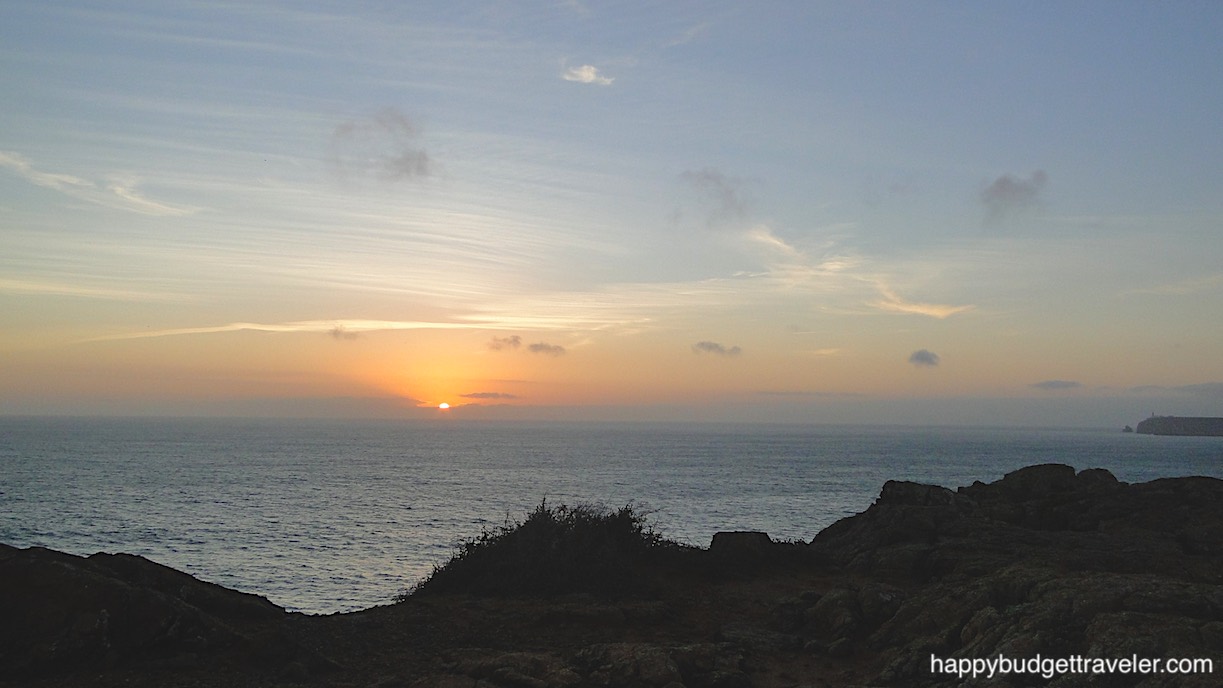
A spectacular sunset at Sagres, the Algarve region-Portugal
3. Portimao
Portimao is a port city known for its old quarter, busy marina and proximity to many beautiful beaches. Its Gothic-styled Nossa Senhora da Conceição church was completed in 1476. It features a strip of 18th century azulejo glazed tiles and a Manueline Baptismal font. Portimao museum is housed in a restored 19th-century cannery, with displays on local history.
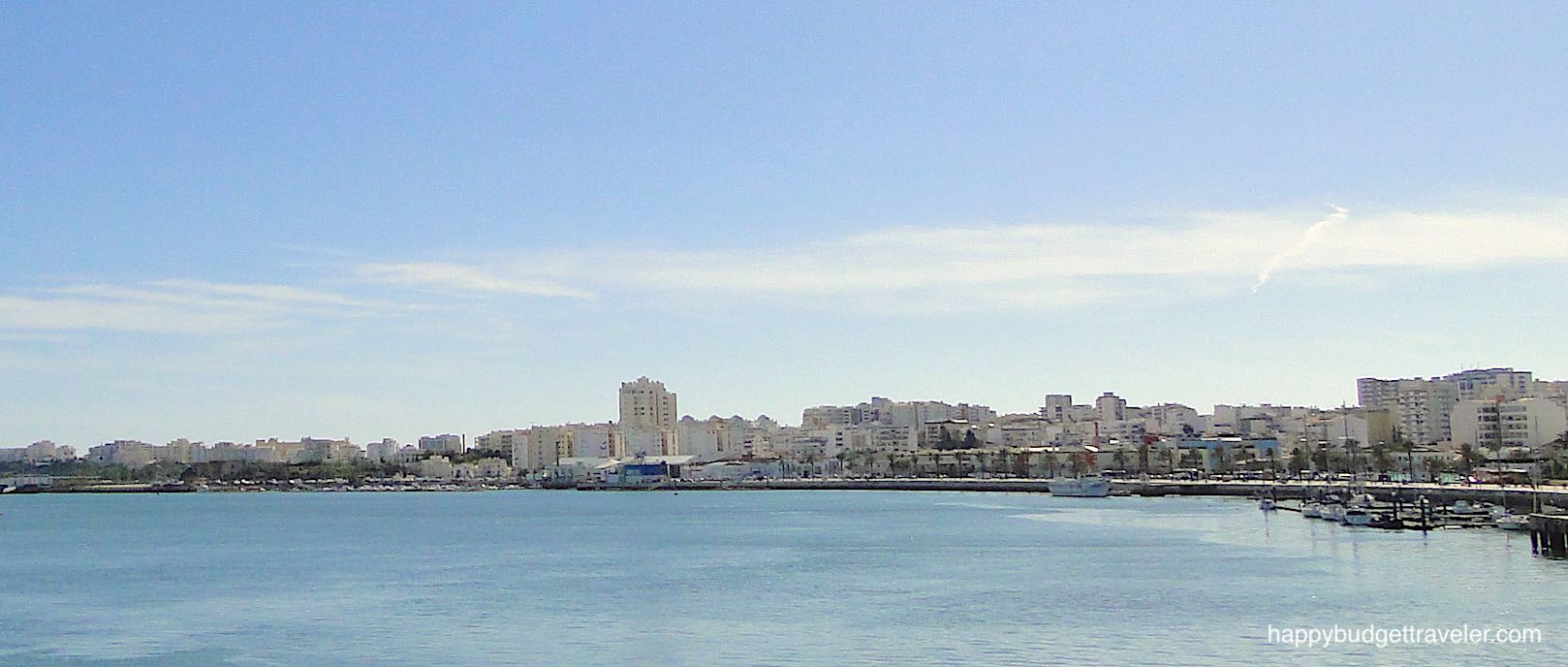
Portimao waterfront, Algarve region-Portugal
1.4 miles/2.3 kms to the south is Praia da Rocha. Considered a “resort town”, this vast expanse of golden sand is supervised by lifeguards (during summer). With no dangerous currents, it is safe for families with children and attracts young couples and the more mature tourist as well. This wide beach extends shallowly out into the sea but the water is usually cold (13-15°C). Jet skis, banana boats, kayaks and parasailers are available for rent. There also is a dolphin watch trip and boat tour along the dramatic coastline.
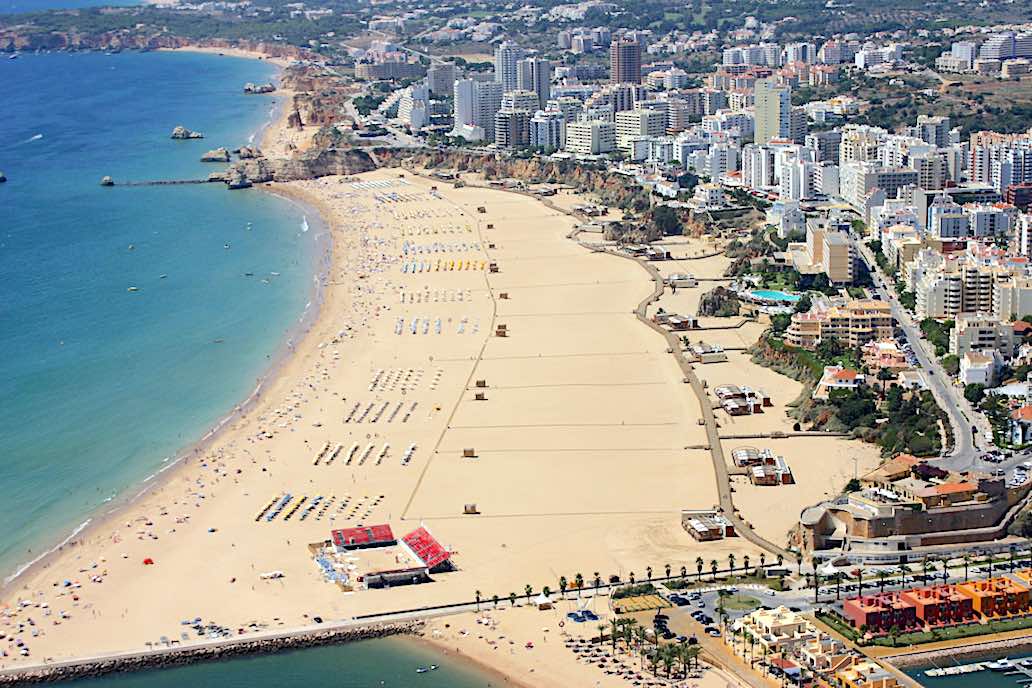
Praia da Rocha, Portimao, Algarve region-Portugal (image credit-algarvetips.com)
Heading west are the smaller beaches of Praia dos Tres Castelos and Praia do Vau. Less crowded than Praia da Rocha but as beautiful.

Portimao marina, Algarve region-Portugal
The marina isn’t big and is a nice place to relax with a box of irresistible local pastries.

